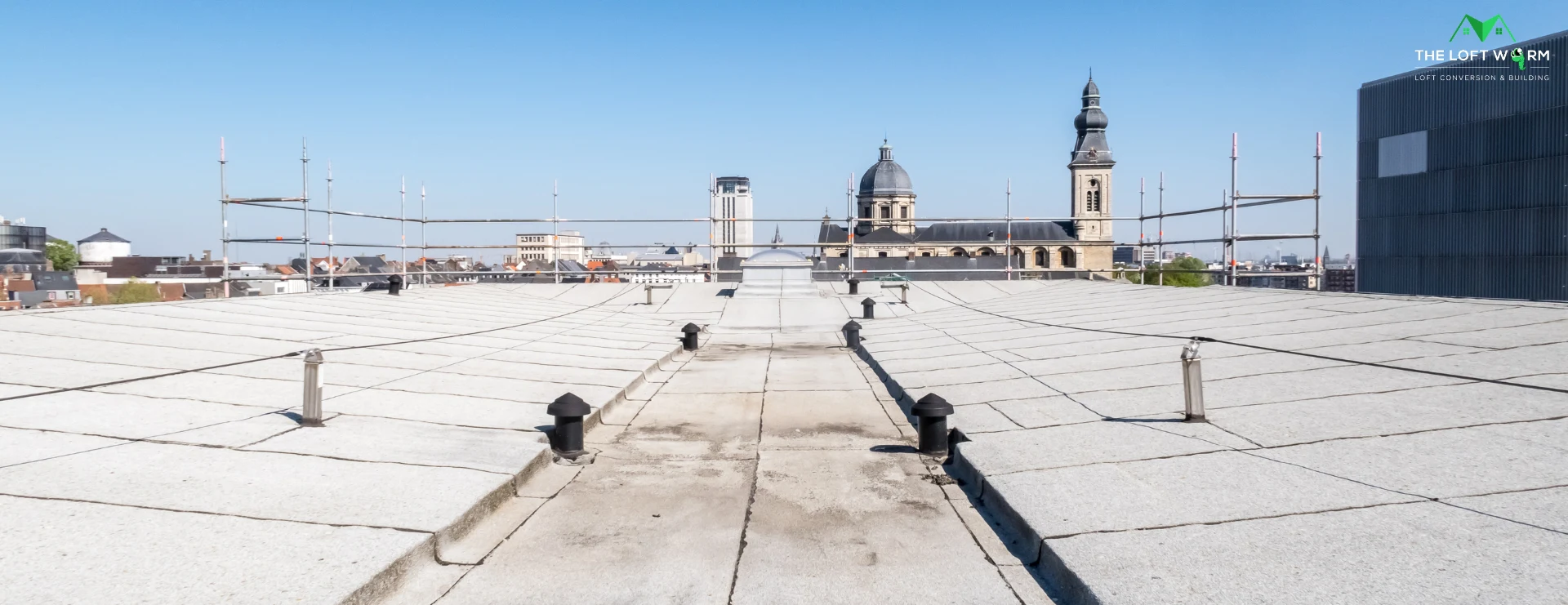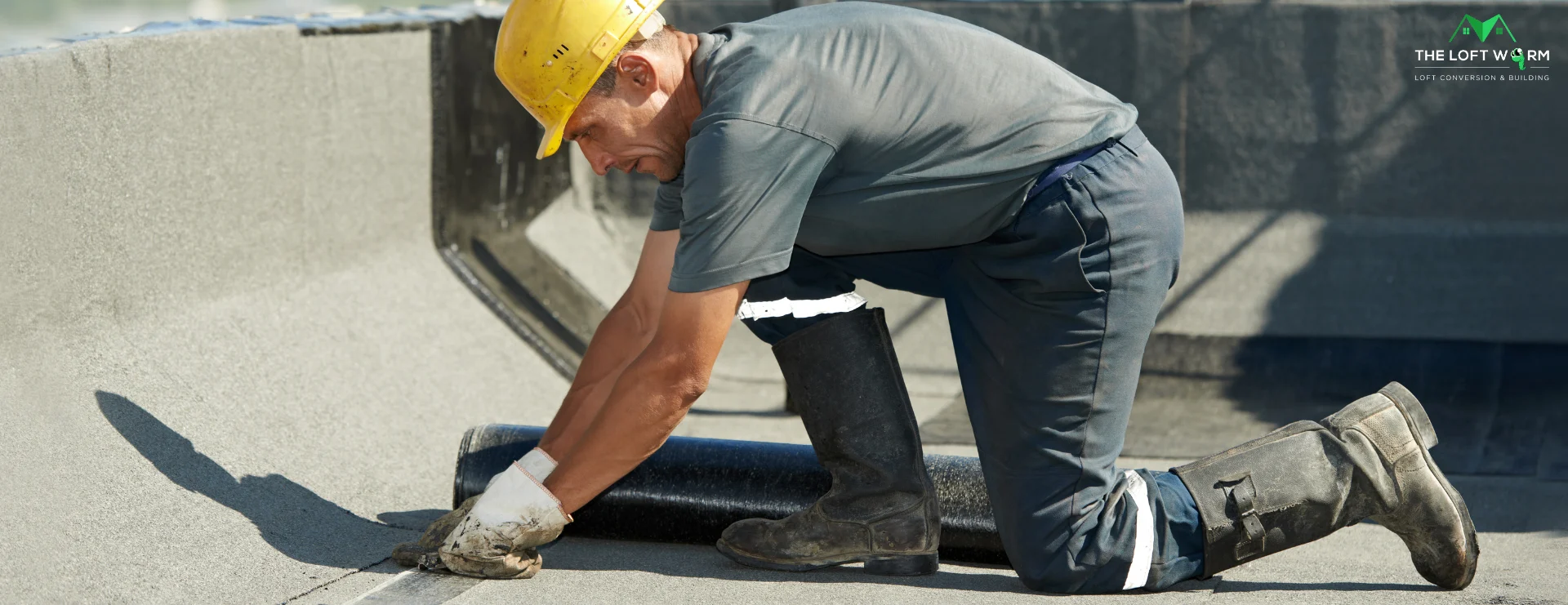Renovating your home can take many forms, but few projects match the magic of a loft conversion. Among the many choices available, the flat roof dormer loft conversion has become a favourite across the UK and for good reason.
Living in a cosy terraced house? A semi-detached property? A character-filled home in a conservation area? These don’t limit your options. Adding a flat roof loft conversion can introduce valuable space and modern style to your home.
We at the Loft Worm UK have seen homeowners convert unused lofts into light-filled bedrooms or even entire suites. But before you picture yourself sipping tea in your new loft retreat, let’s get into everything you need to know about flat roof loft dormer conversions. Design possibilities. Costs. Insulations. Planning permissions.
Why Choose a Flat Roof Dormer Loft Conversion?
A loft conversion flat roof is not just a design choice. It is a space-maximising strategy. It is not like a traditional pitched dormer. A flat roof dormer extends vertically, and it creates a box-like structure that provides significantly more headroom and usable floor area.
This makes it perfect for:
- Growing families who need extra bedrooms.
- Professionals working from home.
- Homeowners who want to increase the property value with an additional storey of living space.
And if you are in Nottingham or similar cities, you will know space is at a premium. That’s why the flat roof dormer loft conversion Nottingham trend has taken off in urban neighbourhoods. It squeezes every possible square metre out of your property footprint.
The Hip to Gable Twist
If your home comprises a sloping side roof, A hip to gable with flat roof rear dormer loft conversion could be the ultimate upgrade. This includes extending the sloping “hip” of the roof into a vertical gable wall, then adding a flat roof dormer to the rear.
The result?
- A loft space that feels almost like a natural extra floor.
- Room for larger furniture layouts.
- A style and modern structure at the back of the house.
For semi-detached and detached homes, this option is very popular because it balances both form and function.
Costs: What to Expect
One of the first questions we come across is: What does a flat roof dormer loft conversion cost?
While every project is different, here’s a general breakdown:
- Flat roof dormer loft conversion cost in the UK can start from around £35,000–£50,000 for a basic build.
- More complex designs (such as a hip to gable with flat roof rear dormer loft conversion) can go upward of £60,000–£70,000.
- Add-ons like: En-suites. Custom staircases . Luxury finishes. These can push the budget higher.
It is an investment, but one that generally increases your property’s value by 15-20%. For many homeowners that makes a loft conversion one of the best ways to add both living space and financial value.
Insulation & Construction Details

Absolutely, it’s not just about space! It is about comfort. A well-executed loft conversion flat roof insulation system is essential for keeping your home warm in winter and cool in summer.
Key points include:
- Rigid insulation boards or spray foam are applied under the flat roof.
- Proper vapour barriers to prevent condensation.
- Compliance with UK building regulations to ensure energy efficiency.
If you’ve ever wondered about the ins and outs of loft conversion, flat roof dormer construction details cover everything from structural steel beams to waterproofing membranes. We at the Loft Work UK make sure every detail from joist strengthening to fire safety is handled with accuracy.
Flat Roof Loft Dormer Conversions in the UK
The flat roof loft conversion UK trend is about more than practicality! It is also about lifestyle. With the UK house prices increasing, converting your loft is time and again a smarter move than relocating.
- A loft conversion and flat roof combination allows you to create a versatile space:
- A master suite with an en-suite bathroom.
- A dedicated playroom or teenage den.
- A tranquil home office, away from the hustle of the main floors.
It is a great example of British ingenuity that maximises space without expanding outwards.
Conservation Area Challenges

But what if your home lies in a conservation area? Can you still go ahead?
The answer is yes! But with conditions. Loft conversion in conservation area projects needs extra care to make sure they align with local guidelines. Councils time and again restrict changes to the external appearance of homes, specifically at the front.
So, can you do a loft conversion in a conservation area?
- Yes, but it usually needs full planning permission.
- Flat roof dormers at the rear are sometimes permitted if they’re discreet.
- Rooflights (like Velux windows) are often preferred for minimal visual impact.
If you are considering a loft conversion in a conservation area, The Loft Worm UK works closely with local planning authorities to create designs that respect heritage while still producing modern functionality.
Why Flat Roof Dormers Are Here to Stay
At first glance, a loft conversion flat roof dormer might look like a simple box extension. But in practice, it is an architectural solution that:
- Maximises headroom.
- Floods interiors with natural light.
- Balances modern needs with traditional homes.
And because of its flexibility, you’ll find them from London terraces to Nottingham semis to countryside homes.
Final Thoughts
If you’re dreaming of a spacious new bedroom? A stylish studio? Need extra breathing room for a growing family? A flat roof dormer loft conversion could be the perfect solution. From insulation and construction details to navigating conservation areas, there is a lot to take into account, but the reward is always worth it.
We at The Loft Worm specialise in turning loft dreams into lived-in realities. Weighing up costs. Exploring design options. Wondering if your conservation area home qualifies? Our team is here to guide you every step of the way.
So, why not stop thinking of your loft as just “storage space” and start imagining it as the most exciting room in your home?
